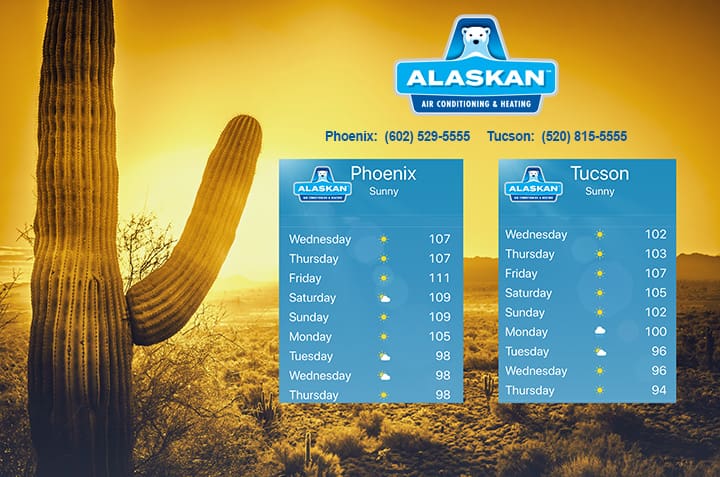During the week of May 25-29, 2020, the Arizona Department of Health Services and the National Weather Service Offices in Arizona will join together to raise awareness during the 2020 Arizona Heat Awareness Week. The summer heat is here and with it comes triple-digit temperatures that last through September. Follow the state’s hashtags at #azwx #azheat
“Periods of excessive and/or extreme heat are no joking matter,”says the National Weather Service. “Heat kills more people than tornadoes, floods, hurricanes, earthquakes and lightning combined,” it warns.
Here’s why you should never ignore a warning from the National Weather Service:
The National Weather Service https://www.weather.gov is a governing body of the United States that monitors, reports on and warn of weather conditions that have potential to cause harm or damage to affected areas in our country. In the Phoenix and Tucson areas, we are often under heat advisories and warnings due to our extreme summer weather. We frequently get issued wind advisories and warnings, as well.
Because we have most recently been under the most dangerous of heat warnings, let’s focus on those today.
Heat warnings are issued because people are under very dangerous weather conditions that have deadly implications if not taken seriously or protected from the elements. The National Weather Service has indicated that mortality begins to increase exponentially as heat increases to and stays above a heat index of 104°F. Most vulnerable are the elderly and the home-bound.
Effects of extreme heat include severe headaches, dehydration, bone and joint discomfort and sometimes death. That is why the warnings are to be taken seriously. In fact, in addition to raising public awareness, the issuance of a heat warnings also alert hospitals and officials to take certain actions to prepare and respond to an increase in emergency calls.
HEAT ADVISORY
A heat advisory means that people can be affected by heat if precautions are not taken. The heat advisory is issued when the temperature remains at or above 100°F for a minimum of 2 hours. For example: If you expected the heat index to reach 100°F in the city of Phoenix, a heat advisory would be issued for that county.
EXCESSIVE HEAT WARNING
A heat warning is a more serious matter. Heat warnings are issued when the heat index reaches 105°F or greater and lasts for 2 hours or more, like it did for several days straight last week in Phoenix and Tucson.
BE PREPARED
Heat Advisories and Warnings serve a very real purpose and should not be ignored. People need to heed the advanced warnings and seek cooler indoor air where they will be safe, more comfortable and can stay adequately hydrated.
If you have still have evaporative cooling or poor air conditioning, sometimes this can be difficult and staying in your own home is not the best place to wait out the warnings. Stay with a friend or relative who has refrigerated air to wait out the excessive heat warnings, especially if there is going to be successive days of extremely hot weather. Staying in a home that is not adequately cooled can be as dangerous as being outside.
For more information on the cooling systems to beat the Arizona heat, call Alaskan Air Conditioning.
For more on Arizona Heat Awareness Week, visit: https://noaa.maps.arcgis.com/apps/Cascade/index.html?appid=ef58590accb84b539b77e5676ca742c0

